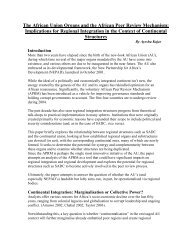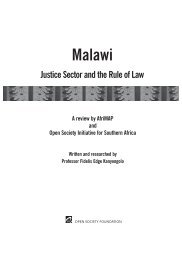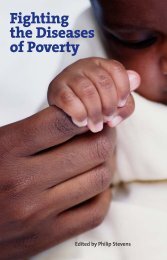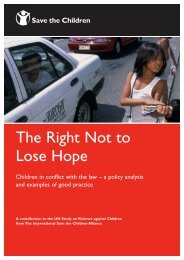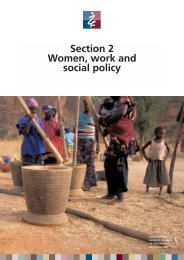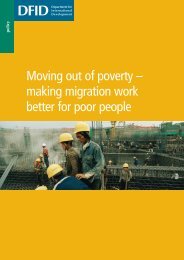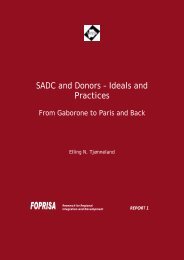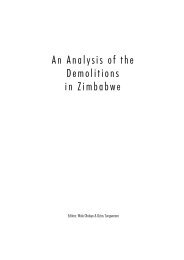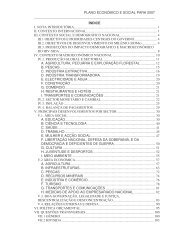Report of the National Conference: Women's Property Rights ... - FAO
Report of the National Conference: Women's Property Rights ... - FAO
Report of the National Conference: Women's Property Rights ... - FAO
You also want an ePaper? Increase the reach of your titles
YUMPU automatically turns print PDFs into web optimized ePapers that Google loves.
collaborative or a mix <strong>of</strong> both? I’m sure that this is an issue that will come up during thisworkshop.Africa <strong>of</strong> course lags far behind Latin America and <strong>of</strong> Asia in terms <strong>of</strong> social and politicalmobilisation. It is also suffering immensely from <strong>the</strong> HIV/AIDS pandemic, with all itswide implications. Both factors make already difficult issues even more daunting. Butthat is no reason for despair, ra<strong>the</strong>r for greater determination.One <strong>of</strong> <strong>the</strong> complexities <strong>of</strong> gender and land issues is <strong>of</strong> course that women’s and men’sinterests within marriages and households are both joint and separate.• But many land reform and land administration programmes over <strong>the</strong> past 60 yearsand more were premised on <strong>the</strong> notion <strong>of</strong> a unitary household in which resources(including title to land) were seen as benefiting <strong>the</strong> whole family in a quiteunproblematic way. Such programmes also regularly ignored <strong>the</strong> differentmeanings and values <strong>of</strong> land and <strong>of</strong> how different rights to land are allocated,distributed, used and passed on. So women almost always lost out – <strong>the</strong> secondaryrights that <strong>the</strong>y previously enjoyed were extinguished.• Something similar happened earlier under colonialism, when colonial rulers inAfrica found it convenient to make alliances with chiefs. In <strong>the</strong> codification <strong>of</strong>customary law that followed, custom was generally interpreted to streng<strong>the</strong>n <strong>the</strong>rights <strong>of</strong> men over women.• Today <strong>the</strong> new land market opportunities have also tended to disadvantagewomen, as men find it easier than women to avail <strong>the</strong>mselves <strong>of</strong> <strong>the</strong> newopportunities implicit in <strong>the</strong> striking slogan that greets arrivals at LusakaInternational Airport – ‘Zambia, a paradise for investors!’• As we know, women and men are embedded in a variety <strong>of</strong> social relations,networks and institutions. These can be absolutely critical for women in beingable to lay claims on people. But as pressure on land – even in Zambia – begins toincrease, and <strong>the</strong> economy and society become more individualised, notions <strong>of</strong>reciprocity and social safety nets within extended families are breaking down,once again to <strong>the</strong> disadvantage <strong>of</strong> women. Clearly, HIV/AIDS is exacerbating thissituation still fur<strong>the</strong>r.Lessons from Pretoria?The workshop on women’s land rights in Sou<strong>the</strong>rn and Eastern Africa which Kaori Izumiand I organised in Pretoria in 2003 concluded that women’s already fragile land rightswere being fur<strong>the</strong>r eroded in a global context <strong>of</strong> privatisation, <strong>of</strong> World Bank-sponsoredland reforms, <strong>of</strong> HIV/AIDS, and <strong>of</strong> changing employment and international tradepatterns. We also felt that <strong>the</strong>re was a need to:• Learn from and build on positive community practices• Continue building a movement41




